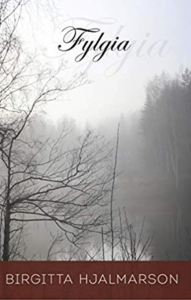Woman, Man, or Both?
 Garbo portrayed you in Queen Christina, beautiful, when you, in fact, were not. These days you’re celebrated as an early feminist, although you, of course, would have sneered. And to be fair, some still call you a traitor, even to yourself.
Garbo portrayed you in Queen Christina, beautiful, when you, in fact, were not. These days you’re celebrated as an early feminist, although you, of course, would have sneered. And to be fair, some still call you a traitor, even to yourself.
Once, at a dinner party in Sweden, my host showed me a fragment of your burial robes. A professor of anatomy, he had attended the opening of your grave beneath St. Peter’s Church in Rome. Many books had been written about you, and I was bold enough to think that I would write one too.
In 1632, when you were crowned Queen of Sweden, your subjects called you “King.” You despised women, in particular your mother, and yet you loved at least one, the young Ebba Sparre, with whom you shared your bed, perhaps not just for warmth, and whom you named Belle.
In 1965, when they opened your grave, their sole purpose was to take a cast of your silver mask. Finding that your coffin had all but fallen in, they decided to replace it. In the process, my host took the opportunity to examine your remains, trying to answer the one question that had trailed you already in life. Were you woman, man, or both?
Born in 1626, on a cold winter’s night, you startled the Stockholm castle with a cry so lusty that they mistook you for a boy. Your father, Gustavus Adolphus, realizing that you were a girl, laughed and lifted you high. Your mother, Marie Eleonora, knew she had failed. When a nurse dropped you, your mother smiled, or so you yourself would claim. Ever since, your one shoulder would sag.
In 1632, Gustavus Adolphus died in the battle of Lützen, in what would be known as the Thirty Years’ War. Deranged with grief, Marie Eleonora kept his heart in a golden shrine. They pried you away from her – at the age of six you became the property of the state. As your father had wished, you learned to ride, fence, and hunt. You read Latin and Greek, studied astronomy and mathematics, spoke Italian and French. You invited Descartes to Stockholm, where he told you that your mind could be free. The two of you would meet at dawn, his cough growing worse, until he died from pneumonia, brought on by those icy castle floors.
At eighteen, on the day of your coronation, you rode in a bejeweled carriage, followed by your favorite horse, gold chains clanking around silver-shod hooves. The absolute monarch of one of the great powers of Europe, you scattered titles and land, so much so that you were accused of bestowing the same land twice. You suffered headaches, insomnia, and horrendous menstrual pains. Expected to marry and give birth to an heir, you refused to be used by a man like “a peasant plowing his field.”
Shrewdly, you maneuvered for your male cousin to succeed you on the throne. No one understood why, until you abdicated and rode south. Close to the Danish border, you changed into men’s clothes, called yourself Count von Dohna, and buckled on a sword. In 1655, amidst cannon salutes, you entered Rome. You wore skirts that day, but you made sure your riding breeches showed underneath.
Was your conversion to Catholicism sincere? Did it not faze you that your father, the Lion of the North, had died for the Protestant cause? Still, with more than two hundred retainers, and funds from Sweden being late or not arriving at all, you needed the generosity of the Pope. You lived in the Palazzo Farnese, one of the finest palaces in Rome. From there you wrote a letter to Belle: “I kiss you a million times.”
But then you fell in love with Azzolino, did you not? A clever young cardinal, he was appointed by the Pope to manage your house. Some say he was a Vatican spy. Either way, I suspect you enjoyed the game. What an odd couple you must have been, he a man of wit, insinuating and subtle, you with your legs flung over the arm of your chair, cussing like a soldier, stroking your chin the way a man might stroke his beard, the next day wearing a dress cut so low that people gasped.
Arrogant and capricious, you continued to live beyond your means. In 1658, while in France, you conspired to become the ruler of Naples. Income from taxes alone would have made you set for life. When you failed, you ordered the slow and gruesome murder of the man you felt was to blame, turning your back on his anguished howls. When you returned to Rome, the Pope banned you from Palazzo Farnese, his patience exhausted at last. Azzolino remained at your side. In 1689, fatally ill himself, he kept watch as you slipped into death. He also arranged your funeral. You wanted it simple, he thought otherwise.
That day in 1965, when they opened your grave, you lay with your arms across your chest, a silver scepter in your hand. Your silk gloves had disintegrated, and the bones of your fingers had fallen off. Your long silk mantle, with traces of ermine, the fur of kings, was strewn with hundreds of embroidered crowns. The fragment my host showed me is now on display at the Royal Armory. He had used a soft tooth brush to bring out the gold.
For a woman, he said, your thigh bones had been robust, but the rest of your skeleton was slight. And yes, your shoulder had sagged, why artists chose to paint you from the side, not head-on. Back in the 1930s, a renowned gynecologist had seen this “crookedness” as further proof that you were, in the language of the day, a pseudo-hermaphrodite, both Hermes and Aphrodite, with a pelvis too narrow to birth a child. Now, the clatter of cutlery coming from the dining room, my host refuted that claim. Your pelvis had most assuredly been female: shallow and with flaring crests.
If I dare write that book, will I get you right? Have you not been prodded enough?
You scoff. You never gave a damn.
—
Birgitta Hjalmarson studied Swedish, English, and German Literature at the University of Lund, Sweden. While covering the San Francisco art beat as a contributing editor for Art & Auction in New York, she wrote Artful Players, a nonfiction book on early California art. In Fylgia, a novel published last year, she returns to her Swedish past, as she portrays a woman who dares go up against all she has been taught to believe in. Birgitta’s next novel will also be set in Sweden, this time among the social upheaval and grand estates of the early 1900s. In a rush of inspiration, long sought, an artist sketches a man as he dies, even though she could have saved him. The painting that results is powerful, but does this in any way redeem her? Is it true that artists must live by a different set of rules?
Fylgia
 The First World War rages on the continent. Hidden in the forest of Sweden, a country church gleams in the sun. Anna, a young woman, sits in the front pew. The vicar pauses to wipe his brow. “Think what harm will come to your children if your marriages begin in sin.”
The First World War rages on the continent. Hidden in the forest of Sweden, a country church gleams in the sun. Anna, a young woman, sits in the front pew. The vicar pauses to wipe his brow. “Think what harm will come to your children if your marriages begin in sin.”
Sixty years later, Anna gives refuge to a young niece, whose marriage is falling apart. Fredrik is long since dead. She still blames him for the death of their child, yet she misses his scent that would linger on her skin, like the moon that shone on the snow and colored it blue.
Each day she visits the child’s grave, an old woman in a tweed beret, her back no longer as straight. Time after time her thoughts return to the past, when she refused to accept the age-old beliefs the village stood for. Was she wrong to break the rules? How did she go on living when all seemed lost? How did she find her way when the map she followed was flawed?
Reviews of Fylgia:
“A subtle and poignant novel set in a small town in Sweden during World War I, and 60 years later, wherein a woman reflects on her life choices and their long-reaching consequences.”
Mrs. Dalloway’s Recommended Read, San Francisco Chronicle
“Something intriguing and gripping flows through every page of this unique work of fiction. We move with the people of Hult through WWI, the Spanish Flu, the Great Recession, WWII and modern times, a world where matchmaking still exists but love finds a way beyond public restrictions. This is classic historical fiction spanning several decades and revealing the characters behind the veil of Swedish law. Beautifully crafted.”
Viviane Crystal, The Historical Novels Review
Website: www.birgittahjalmarson.net
Twitter: twitter.com/birghjalmarson
Facebook: www.facebook.com/BirgHjalmarsonAuthor
Category: On Writing






























